Pets and other animals can boost health and well-being
Cuddling up to furry friends may reduce stress and even strengthen the immune system

Dogs and other kinds of pets can provide us with a variety of benefits.
Carol Yepes / Moment / Getty Images Plus
Share this:
- Share via email (Opens in new window) Email
- Click to share on Facebook (Opens in new window) Facebook
- Click to share on X (Opens in new window) X
- Click to share on Pinterest (Opens in new window) Pinterest
- Click to share on Reddit (Opens in new window) Reddit
- Share to Google Classroom (Opens in new window) Google Classroom
- Click to print (Opens in new window) Print
When Percy Lee has a bad day, he hangs out with his chinchilla, Rin. “She’s like emotional support for me,” says the 14-year-old. Percy, who lives near Kansas City, Kansas, and is the author’s nephew, particularly enjoys snuggling with Rin and watching her explore. “When I get upset and overwhelmed, playing with her is one of my main coping mechanisms,” he says.
Percy isn’t alone. After a long day, lots of people enjoy unwinding with their pets. They might find comfort in cuddling a cute cat or petting a playful pup. Even spending time with non-snuggly animals, like turtles or fish, gives many people a boost.
Kerri Rodriguez studies the bonds between people and animals at the University of Arizona in Oro Valley. “One of the biggest benefits of having a pet is that they never judge you,” she says. “They don’t care if you said something silly, if you have a ketchup stain on your shirt or if your breath smells,” Rodriguez says. Often, pets are simply happy to see us. They make us feel loved.
That animal affection may have benefits that go far beyond temporary mood boosts. Researchers like Rodriguez have found that pets can reduce stress, strengthen people’s immune systems and perhaps even help them learn. Understanding such perks better might inspire people to spend more time around animals, improving their mental and physical health.
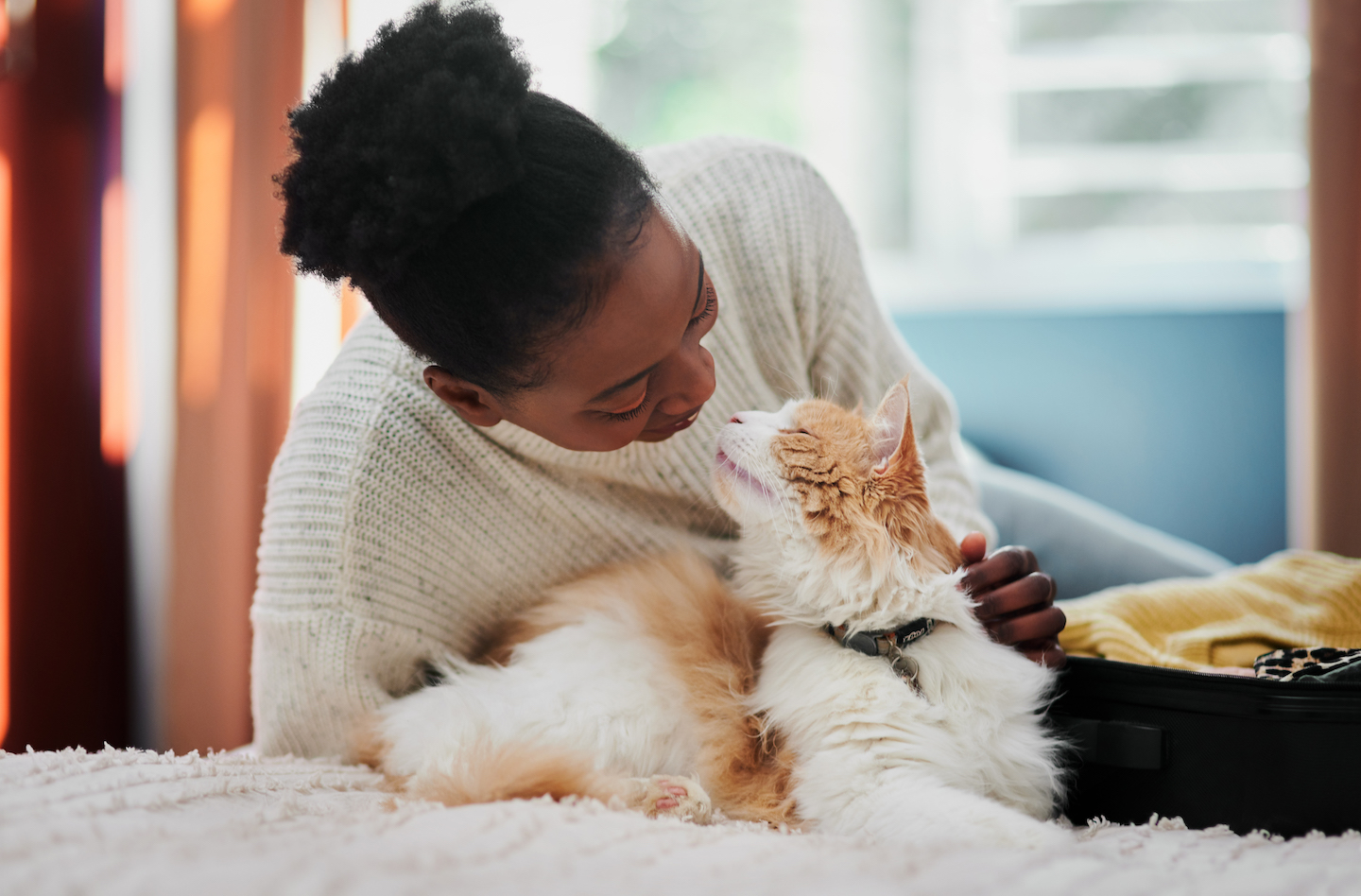
Lowering stress
Patricia Pendry is a developmental psychologist. At Washington State University in Pullman, she has spent years studying how stressful home environments affect kids’ health. That inspired her to search for ways to reduce children’s stress — including spending time with animals. In recent experiments, Pendry has investigated whether hanging out with animals has a measurable effect on the body’s stress system.
Pendry’s work focuses on a hormone called cortisol. The body makes more of that hormone when people are stressed. It makes less when people are calm. Pendry measures cortisol in the saliva of college students before, during and after spending time with animals. Sometimes the animals are specially trained therapy dogs that have been brought to campus. Other times, they are cats and dogs brought in by the local humane society.

When students arrive, they spit into a tube to provide a saliva sample. Then they spend the next 10 minutes doing one of four things. Some go into a room to pet the visiting animals right away. A second group watches the petting group while waiting in line. A third group looks at photos of the animals but doesn’t see them in person. The last group waits to get into the room without any glimpse of the pets. The students provide two more saliva samples to measure cortisol during and after that 10-minute window.
Students who petted the animals had lower cortisol levels at the end of the 10 minutes than any other group, the data showed. Interacting with animals reduces how much cortisol the body makes by boosting its levels of oxytocin (Ox-ee-TOH-sin), Pendry believes. Oxytocin is a hormone that helps calm the stress system.
“As you’re petting and stroking in this rhythmic way, your body makes oxytocin,” she explains. But people don’t even have to touch an animal to get that response. Simply making eye contact with a dog can raise a person’s oxytocin levels, other research suggests.
It’s only just become possible to measure oxytocin in spit samples like those that Pendry collects. So she hasn’t yet studied in detail how higher oxytocin levels might lower cortisol levels. But Pendry plans to see how both hormones respond to animal interactions in her next project.
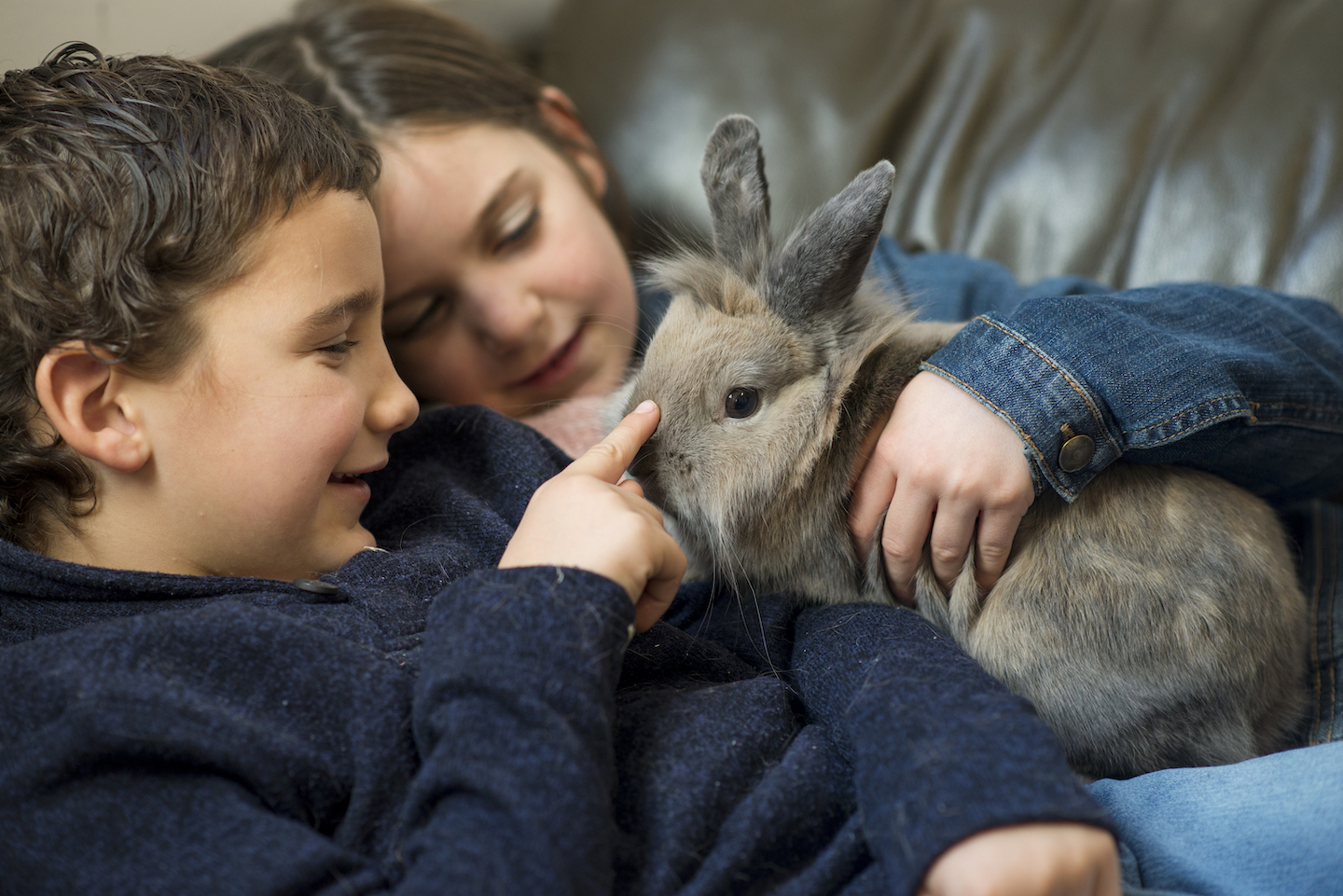
A calming presence
The calming effect of animals can help some people overcome specific challenges.
For instance, there’s some evidence that reading aloud to dogs can help kids improve their reading skills. Reading to a dog is thought to provide support to students, helping them feel more confident in learning new skills.
In one 2020 study in Australia, researchers brought therapy dogs to four schools. First and second graders who struggled to read had one-on-one sessions with the dogs. They read to the animals, getting help from an adult as they needed it. Over the course of 12 weeks, the children improved their ability to read and felt more confident about reading.
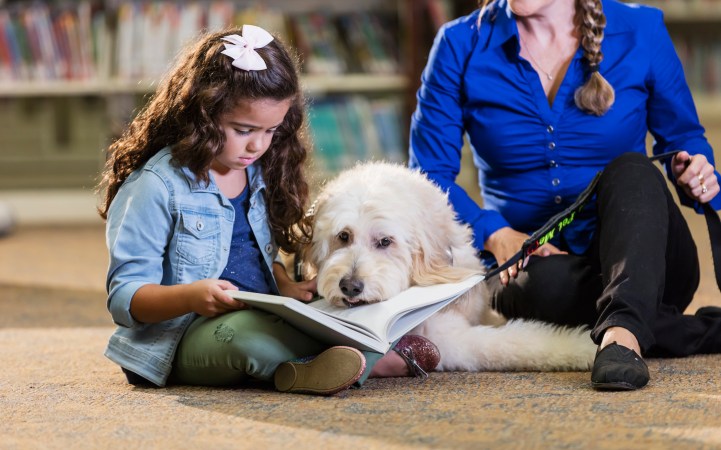
Therapy dogs can help kids in other stressful situations, too. A 2021 study found that therapy dogs could reduce kids’ anxiety while they had their teeth cleaned at the dentist.
That doesn’t mean animals will make anyone feel calmer in any situation, Rodriguez says. “I know this is a bit of a bummer thing to say, but animals aren’t magical cures to everything.” In her research, Rodriguez is trying to figure out when animals can help and when they may not. Someday, she hopes people might use those interactions as an alternative form of medicine — treating anxiety with snuggle time the way they might treat a headache with Tylenol.
Rodriguez’s work has already shown how much service dogs can help people who have mental-health challenges. Service dogs aren’t simply pets. They’re specially trained to help their person. For instance, people who have experienced trauma may struggle with anxiety and other mental-health issues. Service dogs can help reduce those issues, Rodriguez has found.
Dogs don’t have to be specially trained to make a difference, others have found. One 2021 study of about 50 teens in Israel looked at the mood impacts of non-service dogs. Teens who spent one year training a dog, it found, experienced less anxiety and depression from post-traumatic stress disorder.
Service animals also can help children with autism. Some kids with this disorder can become easily overwhelmed by sensory inputs. They may struggle to communicate with other people. A service dog can lean against them to provide calming pressure when they’re upset. Having a dog can also open up opportunities for a child to meet new people and socialize when other kids want to interact with their dog.
These dogs don’t just help the kids they’re assigned to, research by Rodriguez suggests. Knowing that a dog is looking out for their child can help parents rest easier, too. And that may aid relationships throughout the whole family.
It’s not just dogs that can offer emotional support to kids with autism. Kids with autism who interacted with a guinea pig were more likely to approach and interact with other people, a 2010 study found.

A boost to the immune system
Kids may not have much control over whether they have animals at home. But those who do grow up with pets can be up to 40 percent less likely to develop asthma. And they may be 28 percent less likely to develop allergies. Those findings come from a 2020 study led by Mikael Knip. He researches child and adolescent health at the University of Helsinki in Finland.
In another study, his team found that growing up around dogs may cut in half someone’s chance of developing type 1 diabetes. In this disease, the immune system destroys cells of the body that make insulin, a hormone crucial to helping the body use food.
Allergies, asthma and type 1 diabetes all arise from problems with the immune system. Having pets may help prevent those conditions by strengthening kids’ immune systems.
The immune system is designed to fight off microbes, or germs, that could harm the body. But not all microbes are harmful. Early in life, the immune system must “learn” which germs cause harm and which don’t. When it develops properly, the immune system only attacks harmful germs. Without the right training, the immune system can start reacting to things — inside the body or outside it — that aren’t actually threats. That’s what happens when someone has allergies, asthma or type 1 diabetes.
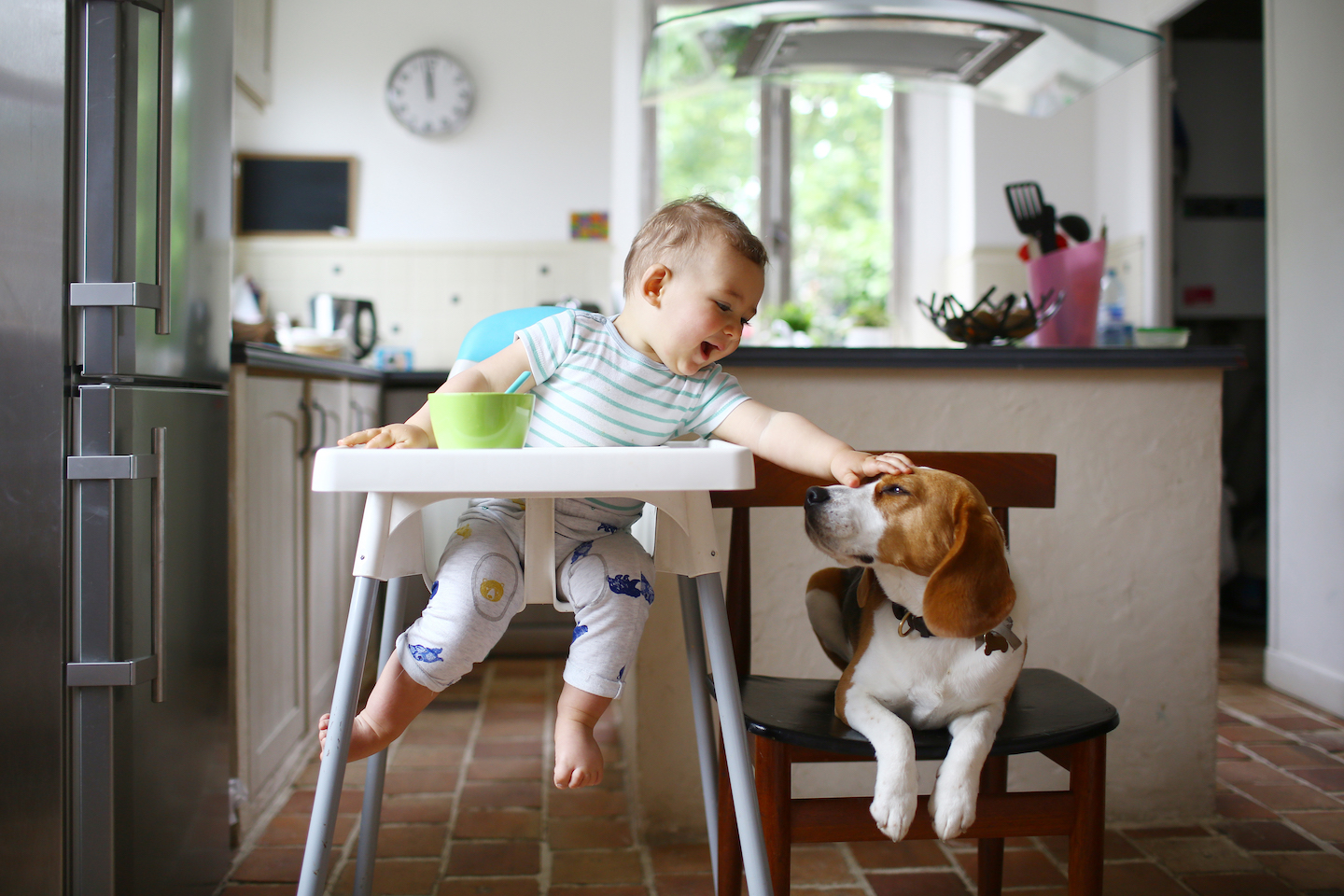
Animals themselves probably don’t help train our immune system. “The idea is that early exposure to a dog or a cat in the house leads to an increased exposure to ‘healthy’ microbes,” Knip explains. All kinds of microbes collect on an animal’s paws and fur while they’re outdoors. The animal then brings those microbes home, which exposes family members to the germs. Those exposures help train up kids’ immune systems.
Pets that spend all their time indoors do not help protect against immune-based diseases, Knip notes. Animals need to bring outdoor germs inside to boost someone’s immunity. Larger animals, like dogs, seem to provide greater immune benefits than cats. “Dogs are, in general, bigger than cats,” Knip says. And they may “bring more microbes into the house.”
People seem to only get immune-system benefits from pets when they’re very young. In Knip’s diabetes study, for instance, kids had lower odds of developing diabetes only if there was a dog in the house when they were babies. “The first three years of life — and the first year in particular — are critical” for training the immune system, Knip says.
So if you’re reading this now, you’re already past that critical, early-life window. But if you grew up in a house with a big dog, you’ve probably experienced the immune benefits and didn’t even know it.
Reaping the benefits
If you don’t have pets, how can you get some of their benefits? Talk to your family about getting an animal. “It’s really important to choose the right type of pet for you and your family,” Rodriguez cautions. Maybe a dog or cat isn’t an option. It may seem like too much work. In that case, “consider something like a turtle or a hamster,” she says. “These pets can still be really fun to interact with but come with a bit less responsibility.”
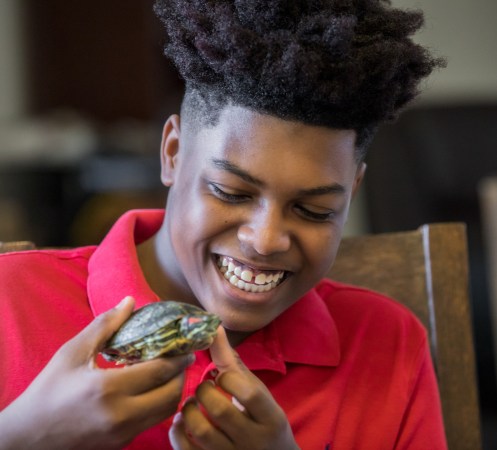
Even time spent watching a fish tank can provide some stress-relief. A 2023 study found that kids in the hospital were much less anxious and fearful when their room had goldfish in it.
If you can’t have a pet of your own, it’s possible to find other ways to interact with animals. “Talk to your neighbors, family members or friends,” Rodriguez suggests. “Can you volunteer to walk their dog for them one day a week? Maybe they have a cat or a bunny that needs [to be] played with?” You could even visit a cat café for a quick cuddle now and then, or volunteer at an animal shelter.
Interacting with animals can be rewarding, Rodriguez says. “But animals have feelings and emotions too! Remember to always respect an animal’s boundaries and personal space, just like you’d like to be treated.”






